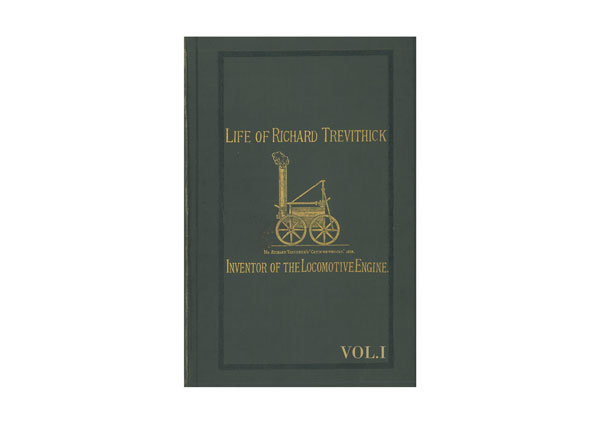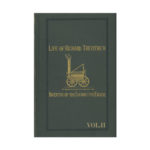Description
This is volume one of the monumental biography of Richard Trevithick (1771-1831) by his eldest son Francis (1812-1877). Francis had little contact with his father while growing up. When he was four, Trevithick senior left for South America, and did not return until Francis was 14.
Francis had his early training in civil engineering under Joseph Locke from 1832, and was appointed resident engineer at the Birmingham end of the Grand Junction Railway in 1840. In September 1841 he became locomotive superintendent of the company at Edge Hill, Liverpool, without any previous experience of locomotive work. He developed the plans for Crewe works and had charge of their building and equipment; also he had the of the whole locomotive department and then that of the Northern Division of the LNWR, including running. Under him the distinctive Crewe-type locomotive was developed from the designs of Allan and Buddicom, and apart from increases in dimensions, he built nothing else until he left Crewe in 1857, when the Northern and Southern Divisions of the LNWR were combined.
A man of easy-going friendly temperament, popular amongst the workmen and their families, “Trevvy” as he was affectionately referred to. Was not really capable of taking on the much bigger responsibilities of the position and despite support from Locke, the Directors demanded his resignation. He returned to Cornwall, taking on the management of an estate, writing this biography and dying in 1877.
Richard Trevithick was a man of considerable energy and talents, but unfortunately had no head for business. In partnership with others, because he could not afford the fees, he took out many patents, usually having to sell out his share to keep his family and finance his next venture. This volume covers his early tin mining activities, working with primitive Newcomen, and the Boulton and Watt pumping engines, his development of high pressure steam, its application to self-propelled vehicles on road and rail (including “Catch-me-who-can”) and to water craft. His use of wrought iron for water tanks to replace barrels for storing water on ships, a floating dry-dock and a steam powered dredger
The first attempt at a tunnel under the Thames from Lavender Dock, Rotherhithe, for which the driftway reached three quarters of the way across, before abandonment, is also dealt with in some detail.




Reviews
There are no reviews yet.